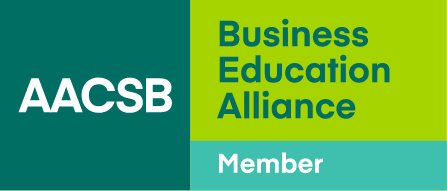Microcredentials Fuel Lifelong Learning in MENA
- As countries in the Middle East and Northern Africa diversify into fields beyond oil production, governments focus on reskilling and upskilling the workforce.
- MENA business schools are responding with microcredentialing programs that align with national goals and provide working professionals with fast, flexible learning options.
- To successfully launch these programs, schools must keep up with technology, navigate a lack of standardization across countries, deal with digital inequalities, and devise workable financial models.
Gone are the days when a student could earn a diploma and rely on that knowledge for an entire career. Modern employers increasingly expect leaders to embrace continuous learning, adaptability, and innovation.
That’s certainly true in the Middle East and North Africa—the MENA region. As economies diversify beyond oil into areas such as technology and finance, blockchain, energy management, and other emerging fields, lifelong learning has become both a cultural value and a national strategy.
Governments are ensuring their countries stay competitive by investing in the skills development of their workforces and by launching strategic interventions that reach beyond academic institutions. In the United Arab Emirates (UAE), the National Strategy for Higher Education 2030 guides efforts to align education with workforce needs. It includes 33 initiatives such as the Expanded Professional Experience Initiative and the Investment in Knowledge Initiative. These programs aim to close the gap between academic outputs and labor market demands.
Lifelong learning has become both a cultural value and a national strategy.
In Saudi Arabia, the Human Capability Development Program presents an ambitious national strategy for lifelong learning by promoting reskilling and upskilling throughout a citizen’s entire career. The program offers incentives for institutions to align with national goals—such as grants that support innovation or public recognition for schools that pioneer new reskilling pathways.
These frameworks reflect a new vision of education as a continual process. They are not just aspirational—they are informing policy, funding, and institutional planning across entire countries. Business schools are responding in ways that not only are meeting the region’s need for an educated workforce, but also are helping to shape global trends in business education.
The Microcredential Advantage
MENA universities are reimagining education by partnering with industries and governments to provide ongoing training in critical sectors. In particular, they’re offering microcredentials and flexible learning programs that enable professionals to grow in specific skills while managing careers and personal commitments. These modular formats align with individuals’ career goals and time constraints.
As an example, last year the American University of Ras Al Khaimah in the UAE introduced a Level 9 Micro-Credential in Energy Efficiency and Management. The credential is designed to help working professionals gain targeted knowledge without committing to a full degree. It directly aligns with both market demands and governmental priorities.
Across the MENA region, other AACSB-accredited institutions are launching microcredentialing programs that address real-world challenges and help professionals develop skills they can use on the job without delay. This practical focus makes short, intensive programs attractive to both learners and employers navigating unpredictable market shifts.
For schools, the challenge lies in maintaining rigor while offering the flexibility professionals require—in other words, remaining relevant while not diluting quality. In the UAE, many microcredential programs are underpinned by the country’s National Qualifications Framework, which helps ensure that microcredential programs meet consistent standards.
Higher Colleges of Technology (HCT) in the UAE has developed robust quality standards for alternative credentials, setting a national example and influencing how other institutions approach microcredentialing. These policies are designed to balance flexibility with academic integrity, especially for learners already engaged in their careers.
For schools, the challenge lies in maintaining rigor while offering the flexibility professionals require.
Many schools develop microcredential programs in collaboration with other organizations to ensure that programs directly address actual skill gaps in the labor market. One example is the American University of Sharjah in the UAE. Through its affiliation with the Sharjah Research, Technology, and Innovation Park, the university co-develops programs with government and industry partners.
This culture of collaboration was evident at two recent gatherings devoted to business education: the Fourth AUC Business Forum, held at the American University of Cairo in 2023; and the AACSB Middle East and North Africa Conference, held in Dubai in 2025. At both gatherings, microcredentialing emerged as a central topic of conversation. Research presented at these events showed that nearly half of business schools worldwide now offer such qualifications, indicating that MENA institutions are part of a growing global movement.
Challenges and Opportunities
Despite the progress made so far, MENA schools still face obstacles as they adopt alternative credentialing programs. They are dealing with four challenges in particular:
Rapid technological change. Institutions must update curricula regularly to keep up with new technologies such as artificial intelligence and blockchain. Faculty also must invest in their own professional development to stay current on technological trends. Programs risk becoming outdated if schools and instructors fall behind.
Lack of standardization. Because of regulatory differences, credentials that meet quality benchmarks in one country might not be recognized in another. This reality limits the portability of microcredentials and can discourage enrollment.
Digital inequality. While nations such as the UAE and Saudi Arabia have modern digital infrastructures, other parts of the region still deal with unreliable internet access and a shortage of devices. Unless countries can close this digital gap, access to microcredentials will remain limited to more privileged groups.
Unclear financial models. Signficiant funding is required for schools to create and maintain microcredentialing programs, yet these programs often generate inconsistent or limited revenue. Business schools must determine how to sustain innovative programming while keeping access affordable.
However, these challenges also present opportunities. For instance, the UAE has launched its National Strategy for Artificial Intelligence 2031, which outlines how the government anticipates integrating AI into industries such as transportation, health, and energy. As part of its strategy, the government also emphasizes embedding AI learning outcomes across education levels.
Similarly, Saudi Arabia has announced national digital transformation goals designed to create momentum and legitimacy for the microcredential movement. These efforts are also paving the way for public-private partnerships that can support program funding and help scale solutions.
The Road Ahead
Business education in the Middle East and North Africa is being transformed in ways that reflect both necessity and vision. Programs developed in response to emerging sectors are helping professionals gain the skills needed for fast-changing markets.
Just as important, the MENA area is well-placed to develop regionally relevant standards due to its cultural, geographic, and economic realities. Schools already are collaborating on educational initiatives, conferences, strategy dialogues, and forums, leading to a growing consensus on the quality and portability of microcredentials. Blockchain-based credentials are also allowing verification across borders, which will be especially valuable in an era of global mobility.
The MENA area is well-placed to develop regionally relevant standards due to its cultural, geographic, and economic realities.
Sustaining this momentum will require consistent cooperation among universities, ministries, and industries. The groundwork is there—it now needs to expand. Through its unified focus on adaptability, innovation, and real-world relevance, the MENA region is poised to lead the global conversation on how education systems respond to labor volatility and skill obsolescence.
In a world where professional skills age faster than ever, the ability to design and deliver high-impact, flexible learning is not just a competitive advantage for schools—it is becoming a baseline requirement. Institutions that fail to recognize this will struggle. Those that adapt, however, will not only thrive but also redefine what it means to be prepared for the future.






